Related Research Articles
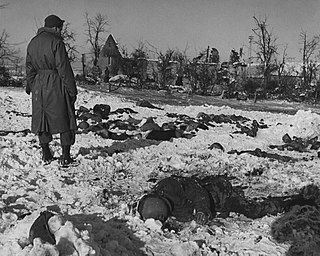
A war crime is a violation of the laws of war that gives rise to individual criminal responsibility for actions by combatants in action, such as intentionally killing civilians or intentionally killing prisoners of war, torture, taking hostages, unnecessarily destroying civilian property, deception by perfidy, wartime sexual violence, pillaging, and for any individual that is part of the command structure who orders any attempt to committing mass killings including genocide or ethnic cleansing, the granting of no quarter despite surrender, the conscription of children in the military and flouting the legal distinctions of proportionality and military necessity.
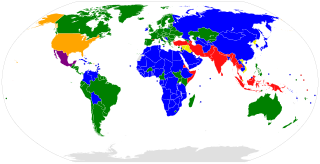
The Geneva Convention relative to the Protection of Civilian Persons in Time of War, more commonly referred to as the Fourth Geneva Convention and abbreviated as GCIV, is one of the four treaties of the Geneva Conventions. It was adopted in August 1949, and came into force in October 1950. While the first three conventions dealt with combatants, the Fourth Geneva Convention was the first to deal with humanitarian protections for civilians in a war zone. There are currently 196 countries party to the 1949 Geneva Conventions, including this and the other three treaties.
A civilian is a person not a member of an armed force nor a person engaged in hostilities.

An unlawful combatant, illegal combatant or unprivileged combatant/belligerent is a person who directly engages in armed conflict in violation of the laws of war and therefore is claimed not to be protected by the Geneva Conventions. The International Committee of the Red Cross points out that the terms "unlawful combatant", "illegal combatant" or "unprivileged combatant/belligerent" are not defined in any international agreements. While the concept of an unlawful combatant is included in the Third Geneva Convention, the phrase itself does not appear in the document. Article 4 of the Third Geneva Convention does describe categories under which a person may be entitled to prisoner of war status. There are other international treaties that deny lawful combatant status for mercenaries and children.
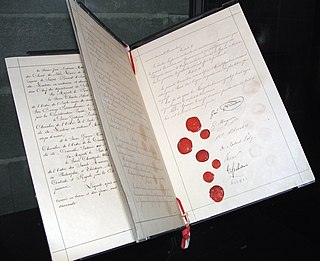
The law of war is the component of international law that regulates the conditions for initiating war and the conduct of hostilities. Laws of war define sovereignty and nationhood, states and territories, occupation, and other critical terms of law.

Combatant is the legal status of a person entitled to directly participate in hostilities during an armed conflict, and may be intentionally targeted by an adverse party for their participation in the armed conflict. Combatants are not afforded immunity from being directly targeted in situations of armed conflict and can be attacked regardless of the specific circumstances simply due to their status, so as to deprive their side of their support.

Non-combatant is a term of art in the law of war and international humanitarian law to refer to civilians who are not taking a direct part in hostilities; persons, such as combat medics and military chaplains, who are members of the belligerent armed forces but are protected because of their specific duties ; combatants who are placed hors de combat; and neutral persons, such as peacekeepers, who are not involved in fighting for one of the belligerents involved in a war. This particular status was first recognized under the Geneva Conventions with the First Geneva Convention of 1864.
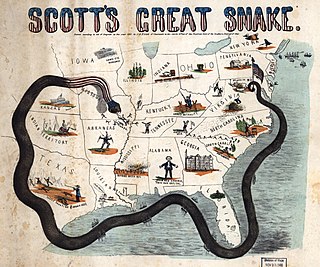
A blockade is the act of actively preventing a country or region from receiving or sending out food, supplies, weapons, or communications, and sometimes people, by military force. A blockade differs from an embargo or sanction, which are legal barriers to trade rather than physical barriers. It is also distinct from a siege in that a blockade is usually directed at an entire country or region, rather than a fortress or city and the objective may not always be to conquer the area.
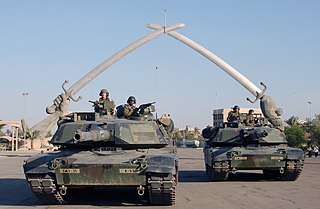
Military occupation, also known as belligerent occupation or simply occupation, is the temporary military control by a ruling power over a sovereign territory that is outside of that ruling power's sovereign territory. The controlled territory is then known as the occupied territory and the ruling power the occupant. Occupation is distinguished from annexation and colonialism by its intended temporary duration. While an occupant may set up a formal military government in the occupied territory to facilitate its administration, it is not a necessary precondition for occupation.
International humanitarian law (IHL), also referred to as the laws of armed conflict, is the law that regulates the conduct of war. It is a branch of international law that seeks to limit the effects of armed conflict by protecting persons who are not participating in hostilities and by restricting and regulating the means and methods of warfare available to combatants.
Customary international law is an aspect of international law involving the principle of custom. Along with general principles of law and treaties, custom is considered by the International Court of Justice, jurists, the United Nations, and its member states to be among the primary sources of international law.
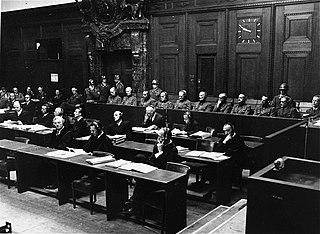
The Hostages Trial was held from 8 July 1947 until 19 February 1948 and was the seventh of the twelve trials for war crimes that United States authorities held in their occupation zone in Germany in Nuremberg after the end of World War II. These twelve trials were all held before US military courts, not before the International Military Tribunal, but took place in the same rooms at the Palace of Justice. The twelve US trials are collectively known as the "Subsequent Nuremberg Trials" or, more formally, as the "Trials of War Criminals before the Nuremberg Military Tribunals" (NMT).

The Geneva Convention on Prisoners of War was signed at Geneva, July 27, 1929. Its official name is the Convention relative to the Treatment of Prisoners of War, Geneva July 27, 1929. It entered into force 19 June 1931. It is this version of the Geneva Conventions which covered the treatment of prisoners of war during World War II. It is the predecessor of the Third Geneva Convention signed in 1949.

War can heavily damage the environment, and warring countries often place operational requirements ahead of environmental concerns for the duration of the war. Some international law is designed to limit this environmental harm.
Distinction is a principle under international humanitarian law governing the legal use of force in an armed conflict, whereby belligerents must distinguish between combatants and protected civilians. Combatant in this instance means persons entitled to directly participate in hostilities and thus are not afforded immunity from being directly targeted in situations of armed conflict. Protected civilian in this instance means civilians who are enemy nationals or neutral citizens outside of the territory of a belligerent power.
Air warfare must comply with laws and customs of war, including international humanitarian law by protecting the victims of the conflict and refraining from attacks on protected persons.

The Geneva Conventions are international humanitarian laws consisting of four treaties and three additional protocols that establish international legal standards for humanitarian treatment in war. The singular term Geneva Convention colloquially denotes the agreements of 1949, negotiated in the aftermath of the Second World War (1939–1945), which updated the terms of the two 1929 treaties and added two new conventions. The Geneva Conventions extensively define the basic rights of wartime prisoners, civilians and military personnel; establish protections for the wounded and sick; and provide protections for the civilians in and around a war-zone.
Yoram Dinstein was an Israeli scholar and professor emeritus at Tel Aviv University. He was a specialist on international law and an authority on the laws of war. He served as President of Tel Aviv University from 1991 to 1998 and won the 2023 Israel prize for law research.
Customary international humanitarian law is a body of unwritten rules of public international law, which govern conduct during armed conflict.
In international humanitarian law and international criminal law, an indiscriminate attack is a military attack that fails to distinguish between legitimate military targets and protected persons. Indiscriminate attacks strike both legitimate military and protected objects alike, thus violating the principle of distinction between combatants and protected civilians. They differ from direct attacks against protected civilians and encompass cases in which the perpetrators are indifferent as to the nature of the target, cases in which the perpetrators use tactics or weapons that are inherently indiscriminate, and cases in which the attack is disproportionate, because it is likely to cause excessive protected civilian casualties and damages to protected objects.
References
Citations
- ↑ DARCY, SHANE (2003). "THE EVOLUTION OF THE LAW OF BELLIGERENT REPRISALS". Military Law Review. 175: 184–251.
- ↑ Karl Josef Partsch: Self-Preservation. EPIL IV (2000), pages 380-383
- ↑ Bennett 2019, p. 25.
- ↑ "reprisal (n.) etymonline.com. Retrieved December 13, 2014.
- 1 2 3 "Customary IHL - Rule 145. Reprisals".
- ↑ "Legal Affairs".
- ↑ Shaw 2008, p. 1129.
- ↑ Townsend, Charles (1975). The British Campaign in Ireland 1919-1921. Oxford University Press. p. 149. ISBN 019821863X.
- 1 2 3 Bennett 2019, p. 10.
- ↑ Bennett 2019, p. 5.
- ↑ Rogers 2012, p. 17.
- ↑ Brownlie 2008, p. 466.
- 1 2 Dinstein 2004, p. 220.
- ↑ "Customary IHL - Rule 146. Reprisals against Protected Persons". ihl-databases.icrc.org. Retrieved 2016-10-10.
- ↑ "CHAPTER 8 - Remedies for Violation of International Law; War Crimes". ihl-databases.icrc.org. Retrieved 2016-10-10.
- ↑ Bennett 2019, p. 19.
- ↑ Hanke 1993, p. 12.
- ↑ Anderson 1999, p. 311.
Sources
- Anderson, Kenneth (1999). "Reprisal killings". In Gutman, Roy; Rieff, David; Anderson, Kenneth (eds.). Crimes of War: What the Public Should Know . New York: W. W. Norton & Company. ISBN 9780393319149.
- Bennett, John (2019). "Reaping the Whirlwind: The Norm of Reciprocity and the Law of Aerial Bombardment During World War II" (PDF). Melbourne Journal of International Law. 20: 1–44.
- Brownlie, Ian (2008). Principles of Public International Law (7 ed.). New York: Oxford University Press. ISBN 978-0-19-921770-0.
- Darcy, Shane (March 2003). "The Evolution of the Law of Belligerent Reprisals". Military Law Review. 175: 184–251.
- Dinstein, Yoram (2004). The Conduct of Hostilities under the Law of International Armed Conflict . Cambridge: Cambridge University Press. ISBN 0-521-54227-8.
- Hanke, Heinz Marcus (1993). "The 1923 Hague Rules of Air Warfare: A Contribution to the Development of International Law Protecting Civilians from Air Attack". International Review of the Red Cross. 33 (292): 12–44. doi:10.1017/S0020860400071370.
- Rogers, A.P.V. (2012). Law on the Battlefield (3rd ed.). Manchester: Manchester University Press.
- Shaw, Malcolm (2008). International Law (6th edn). Cambridge: Cambridge University Press. ISBN 978-0-521-72814-0.